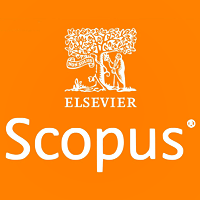
This article is an open access article distributed under the terms and conditions of the Creative Commons Attribution license (CC BY).
CLINICAL CASE
Morphological, immunohistochemistry and molecular analysis of differentiated high-grade carcinoma
Pirogov Russian National Research Medical University (Pirogov University), Moscow, Russia
Correspondence should be addressed: Dalgat R. Makhachev
Akademika Volgina, 37, Moscow, 117437, Russia; ur.liam@2002taglad
Author contribution: FMakhachev DR, Bulanov DV, Shovkhalov MM, Bekmurziev BZ, Geroev IA — data analysis and interpretation, manuscript writing, editing; Netsvetova AM, Zhusupova AR — manuscript writing, editing; Gubich DS, Manovski AM — clinical data acquisition, editing.
High-grade non-anaplastic (HGFC-NA) thyroid tumors belong to a rare and aggressive category of neoplasms that occupy an intermediate position between differentiated and anaplastic carcinomas. There are high mortality rate and limited standard treatment options, which usually include surgical tumor removal with subsequent radioiodine treatment and levothyroxine suppression therapy. Targeted tyrosine kinase inhibitors are additionally considered in radioiodineresistant forms, but the efficacy of those is limited. A clinical case of differentiated high-grade thyroid carcinoma (DHGTC) in a 62-year-old female patient post hemithyroidectomy is presented. Histological assessment, immunohistochemistry (TTF-1, PAX8, CK19, p53, Ki-67), and the key marker (TERT, TP53, BRAF) molecular testing methods were used. The tumor size was 3.4 × 2.8 × 2.5 cm; the tumor showed pronounced architectonic heterogeneity, focal necrosis, high mitotic activity — 8–10 mitoses per 10 fields of view at ×400 (corresponding to ≥ 5 per 2 mm2), and the Ki-67 proliferation index reached 35%. IHC was used to detect the TTF-1 and PAX8 expression, mutational p53 pattern of expression, suggesting the TP53 mutation. Molecular testing revealed no alteration of the TERT and BRAF genes. These characteristics made it possible to verify the diagnosis of DHGTC. A conclusion was drawn about the need for comprehensive morphological and molecular diagnosis of HGFC-NA tumors, since the mitotic activity quantitative parameters, Ki-67, and TERT/TP53 status determine the prognosis and the personalized therapy selection.
